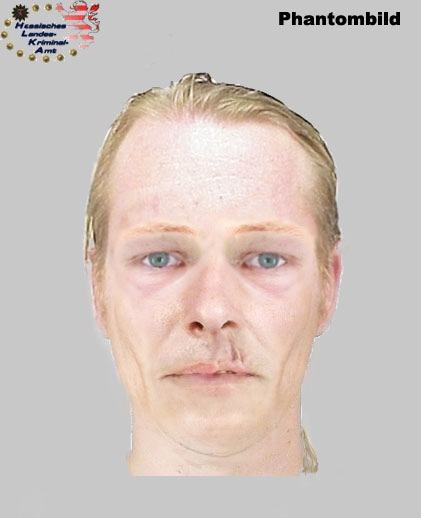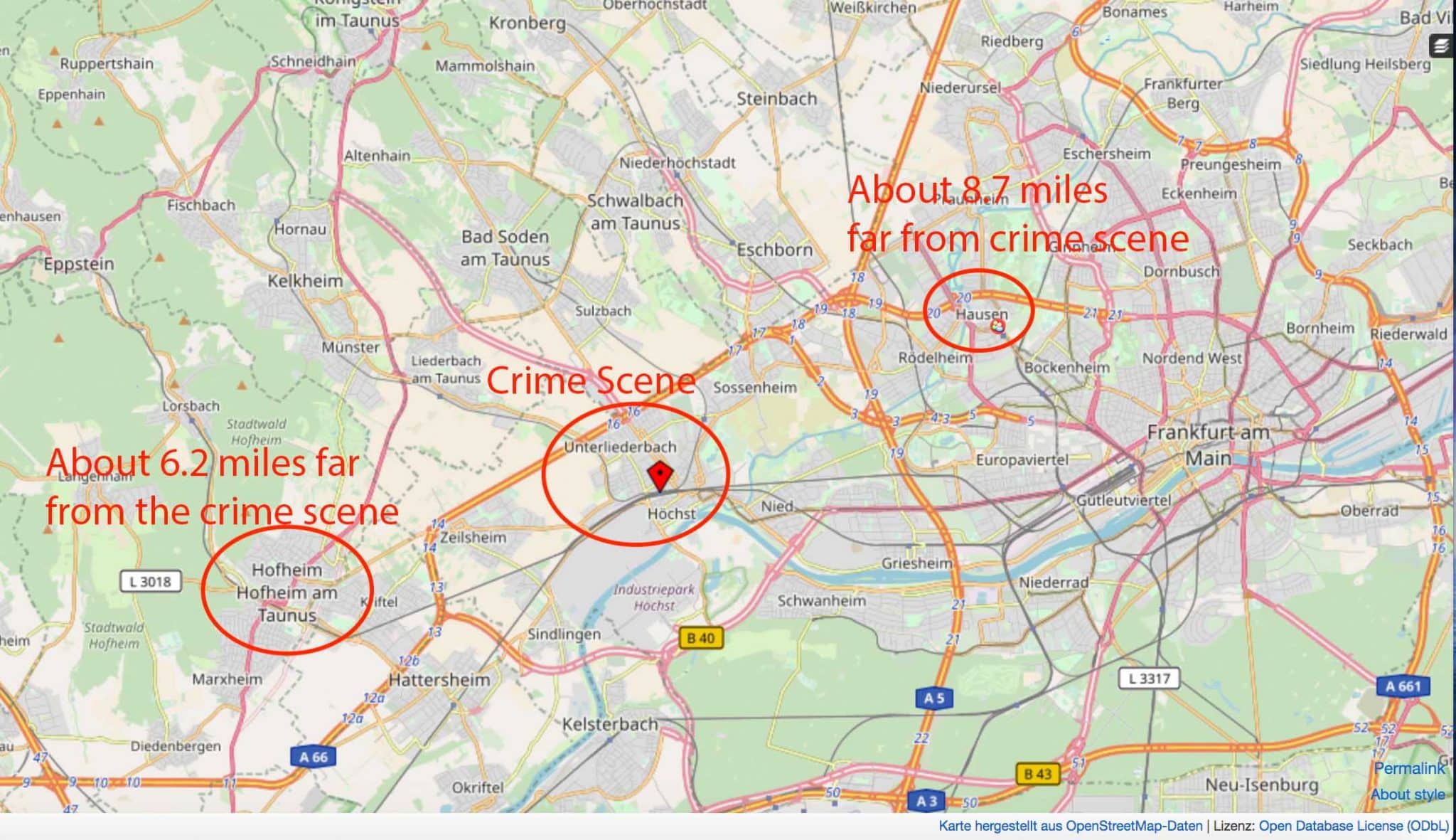The Facial Composite of the Suspect
Several witnesses report having seen a man with a ponytail and an injury to the upper lip
(a scar or an orofacial cleft).
• approximately 175 cm (5’7”) tall
• In 1998 about 20 to 30 years old (today between 40 and 60 years old)
• unkempt appearance
• pale face
• slender – even described as lean – figure
• scar in the area of the upper lip, possibly “harelip” (cleft lip and palate)
• Dark blond, greasy, long hair, which is or was worn as a plait or ponytail
• Tristan was killed at Liederbach tunnel. The offender might therefore have been wearing (partially) wet pants and shoes and/or clothes with bloodstains.
• At the time of the killing (spring 1998), the person in question might have been present in the Frankfurt suburbs Unterliederbach, Zeilsheim and Höchst, especially near Frankfurt-Höchst railway station, and the neighboring Main-Taunus towns (such as Niedernhausen, where Tristan’s backpack was found), possibly without having a residence there.
• It cannot be completely ruled out that the offender no longer lives in the immediate region of the crime today. He could have moved away for professional reasons, for example.
The police requires your assistance:
1. Who noticed anything on the day of the crime and has not yet or not completely reported to the police?
2. Who knew Tristan or persons close to him, especially persons older than him with whom Tristan had contact in the weeks before his death?
3. Who suspects a certain person to be the perpetrator? Suspicions could arise because someone has changed their behaviour, has made incriminating statements or has left his living conditions for no apparent reason (flight).
4. A part of the crime is very likely to have taken place in the Liederbach. Therefore pants and shoes of the offender might have been – at least partially – wet. Who saw a person in wet and/or bloodstained clothing on the day of the murder?
Phone +49 (0) 69 – 755 51108 (office hours)
Phone +49 (0) 69 – 755 53111 (KDD Kriminaldauerdienst)
or any other police station in Germany.
The Frankfurt am Main Prosecutor’s Office is offering 15,000 euros for any information leading to conviction of Brübach’s murderer. A private individual has added 5,000 euros to this.
Profile of the Offender
The systematic approach to the mutilation of the corpse includes techniques of slaughter and butchery. The suspicion that the offender might come from another culture (as initially assumed) has not been substantiated. With regard to the suspect in the facial composite, witnesses speak of a man who spoke standard High German without any accent. The police also assume that the perpetrator must have been well acquainted with the area around the crime scene, at the tunnel and in the station district and perhaps worked or lived nearby. The cuts made by knife on Tristan’s corpse are classified by experts as “professional” and point to an offender who must have had specialist knowledge (“butchering”, animal slaughter or similar), including anatomical knowledge. He could, for example, work in a corresponding craft or a medical profession. This is possible, but it is not necessarily the case.
The suspect depicted in the facial composite has an “uncanny” or “monstrous” effect on a lot of viewers. Investigators, however, presume the offender to appear normal, someone who does not attract attention in his everyday surroundings and who might live in seclusion.
Whether the offender is someone with an aggressive disposition, a drug or an alcohol addict, a dealer, a man with pedosexual tendencies or someone who has attracted attention before or after the murder through other violent crimes, desecration of graves or cruelty to animals remains speculation and has not been proven. Again, one or more of these points may or may not apply.
Sightings of the „Ponytail Man” (Selection)
A female witness sees a man with a cap and ponytail come out of the shrubberies near the crime scene (in the area surrounding the southern entrance of the tunnel).
You are currently viewing a placeholder content from Google Maps. To access the actual content, click the button below. Please note that doing so will share data with third-party providers.
More InformationA female witness reports to have seen Tristan in the company of a man with a ponytail. They were both coming from Gotenstraße, entered Schneidmühlenweg and turned left at the end of Schneidmühlenweg (into Königsteiner Straße). The witness claims to have seen the man several times before in the suburb Engelsruhe (Frankfurt).
You are currently viewing a placeholder content from Google Maps. To access the actual content, click the button below. Please note that doing so will share data with third-party providers.
More InformationA male witness claims to have seen a man resembling the facial composite at the northern entrance of the Liederbach tunnel.
Children of the Vincenzhaus Hofheim (about 6 miles from the crime scene) saw a man resembling the facial composite. The man watched through a fence how the children played on the grounds of the institution. He is said to have invited several boys to come to some shops with him so he could buy them sweets and toys.
You are currently viewing a placeholder content from Google Maps. To access the actual content, click the button below. Please note that doing so will share data with third-party providers.
More InformationYou are currently viewing a placeholder content from Google Maps. To access the actual content, click the button below. Please note that doing so will share data with third-party providers.
More InformationA man resembling the facial composite shows up at a law firm, stating he had just been released from prison, had immediately screwed up again and was in need of help. The paralegal sends him to a law firm specialized in criminal law, but he never shows up.
A man closely resembling the facial composite and carrying a knife spoke to children on a playground.




